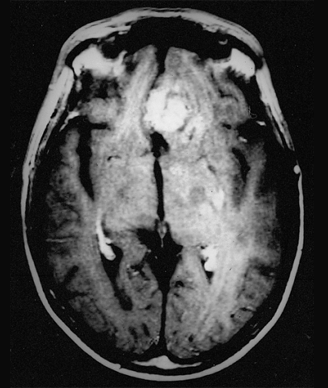Lomustine/Bevacizumab Fails to Improve Survival in Recurrent Glioblastoma
Despite promising progression-free survival results, the combination of bevacizumab and lomustine for the treatment of first recurrence in glioblastoma did not improve overall survival, according to findings from the phase III EORTC-26101 trial.
Promising progression-free survival results failed to translate into an overall survival improvement

Despite promising progression-free survival results, the combination of bevacizumab and lomustine for treating first recurrences of glioblastoma did not improve overall survival, according to findings from the phase III EORTC-26101 trial, reported at the 20th Annual Scientific Meeting of the Society for Neuro-Oncology, held November 19-22 in San Antonio, Texas.
“Bevacizumab treatment in patients with progressive glioblastoma-despite prolonged progression-free survival-does not confer an [overall] survival advantage,” reported Wolfgang Wick, MD, professor of neurology at the University Clinic Heidelberg in Germany. “The future challenge is to identify patients deriving a benefit from that treatment.”
Progression-free survival seemed promising, he noted: 4.17 months among patients receiving the combination treatment vs 1.54 months among controls receiving only lomustine (hazard ratio [HR], 0.49 [95% confidence interval (CI), 0.39–0.61]; P < .0001).
A total of 8.8% of patients in the combination-therapy arm had no progression at 1 year, compared with 1.9% of patients in the lomustine-alone arm.
However, overall survival did not differ between the two study arms, with a median overall survival of 8.6 months for the lomustine-alone study group and 9.1 in the bevacizumab/lomustine study group (HR, 0.95 [95% CI, 0.74–1.21]; P = .65).
Nor was neurological deterioration–free survival (NDFS) significantly different between the lomustine and the bevacizumab/lomustine study arms (5.72 months vs 6.21 months; HR, 0.78 [95% CI, 0.58–1.06]; P = .112), Dr. Wick noted.
Toxicity was “as expected, with more events in the combination arm,” he said. However, patients in the combination study arm had also been on treatment for a longer time, Dr. Wick noted. “Crossover to bevacizumab occurred in 35.5% of patients in the control arm, whereas 19% of patients in the combination arm continued with bevacizumab at progression.”
Epigenetic classification, MGMT status, and other expression profiling data analyses are “almost finished” and will be reported in the near future, added Dr. Wick.